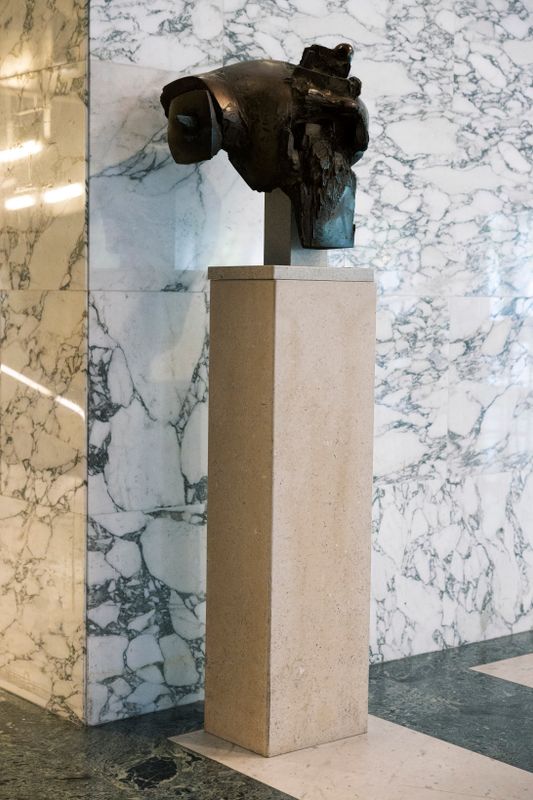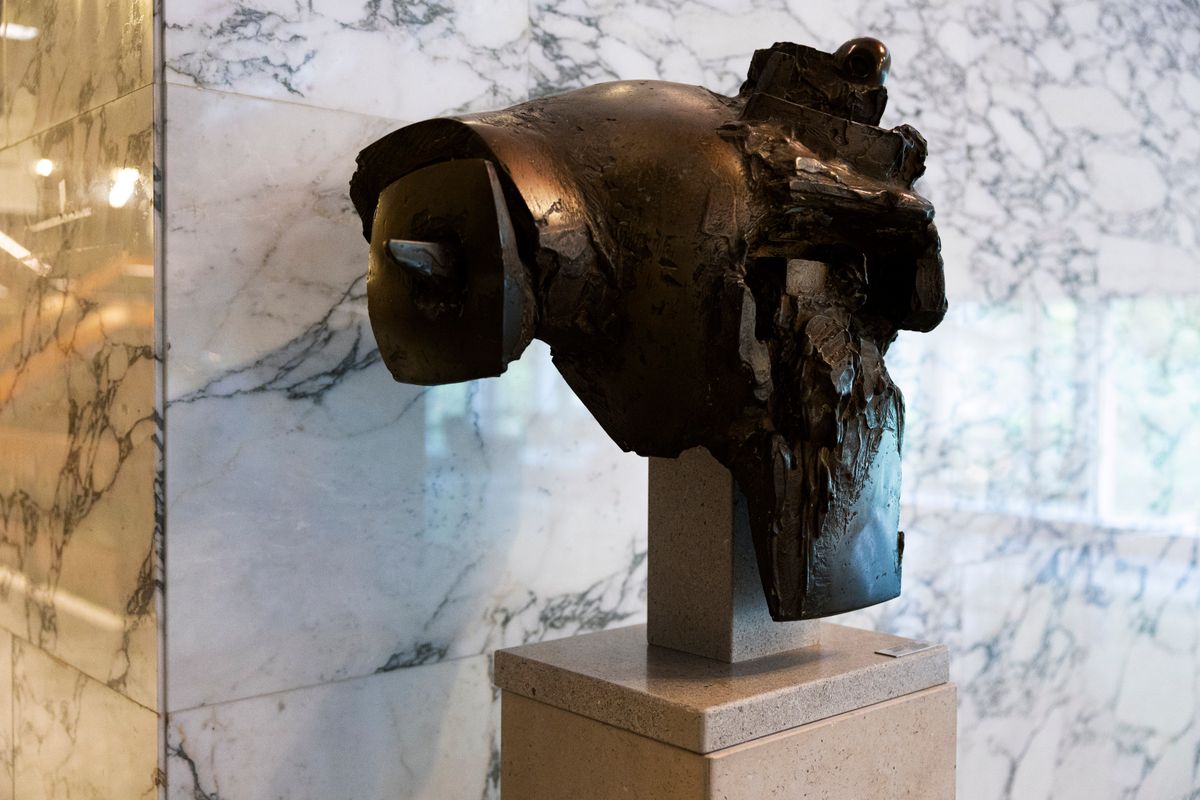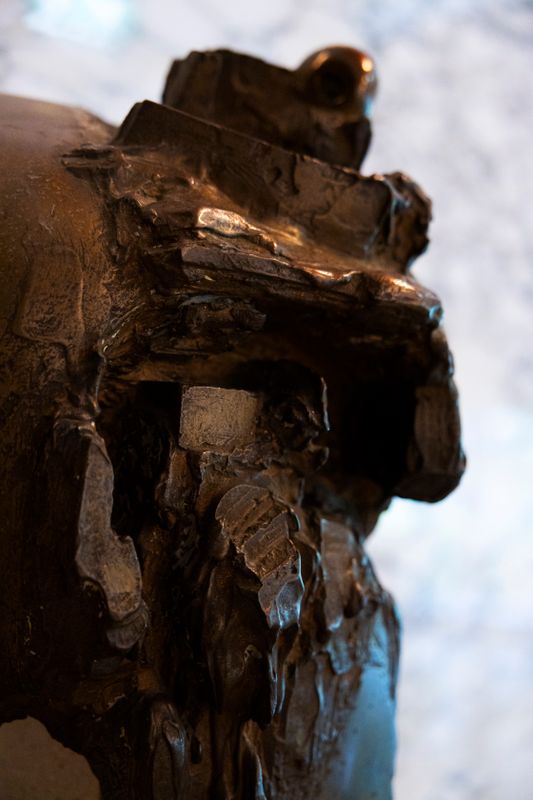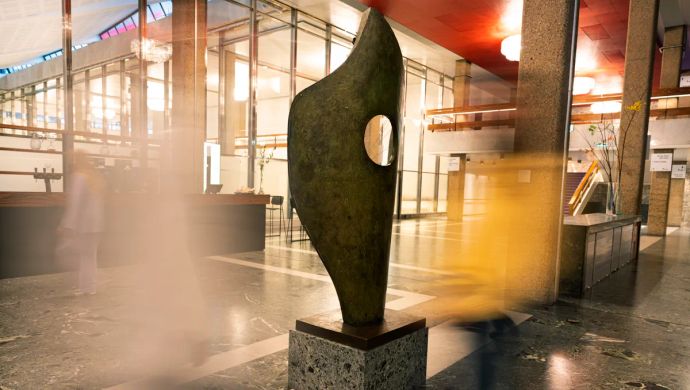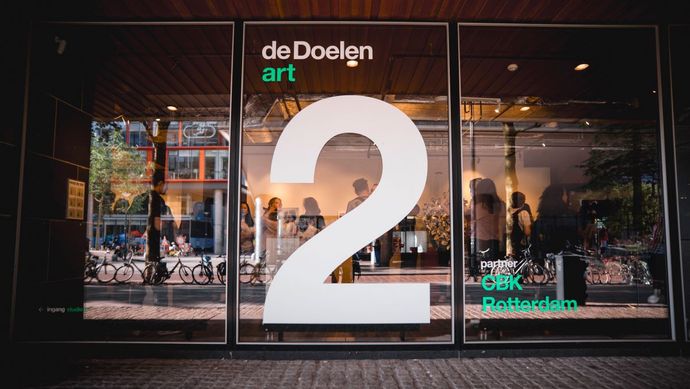Bernard Meadows | Brutus I

Artist: Bernard Meadows (1915-2005)
Artwork: Brutus I (1915-2005)
Collection: Rotterdam municipal collection
Acquisition: de Doelen architects
Bernard Meadows worked as an assistant to Henry Moore and showcased his work alongside other British sculptors at major international exhibitions, including the Venice Biennale (1952). In the 1980s, he worked as the director of the Henry Moore Foundation. Meadows was part of a younger generation of British sculptors—younger than Henry Moore and Barbara Hepworth, that is. This group was referred to as ‘The Geometry Of Fear’. Their works were not as polished, refined, and well-balanced as Moore’s and Hepworth’s but rather rough, unfinished, angular, and pointed. These sculptures were meant to reflect on the tensions permeating post-war society, as caused by a global conflict that had brutally exposed human shortcomings and guilt. The Cold War and a fear of nuclear Armageddon were additional themes in their work.
Grateful for the trust placed in them by the Rotterdam city government, the architects of de Doelen decided to purchase Meadow’s sculpture Brutus I (1963) and subsequently donate it to the concert venue. By that time, Meadows was no longer an up-and-comer: he had secured a position as professor of sculpture at the Royal College of Art in London. In 1962, he got to exhibit his work at the Venice Biennale again. Meadows was in pursuit of a visual language in which he could depict extreme violence. He drew inspiration from Roman busts and Michelangelo's Brutus. His sculptures feature powerful, semi-abstract representations of danger and violence, without having to resort to depicting recognizable human figures. He protested against dictators, war, and violence through his sculptures. Brutus I, too, is a statement against war and violence.


